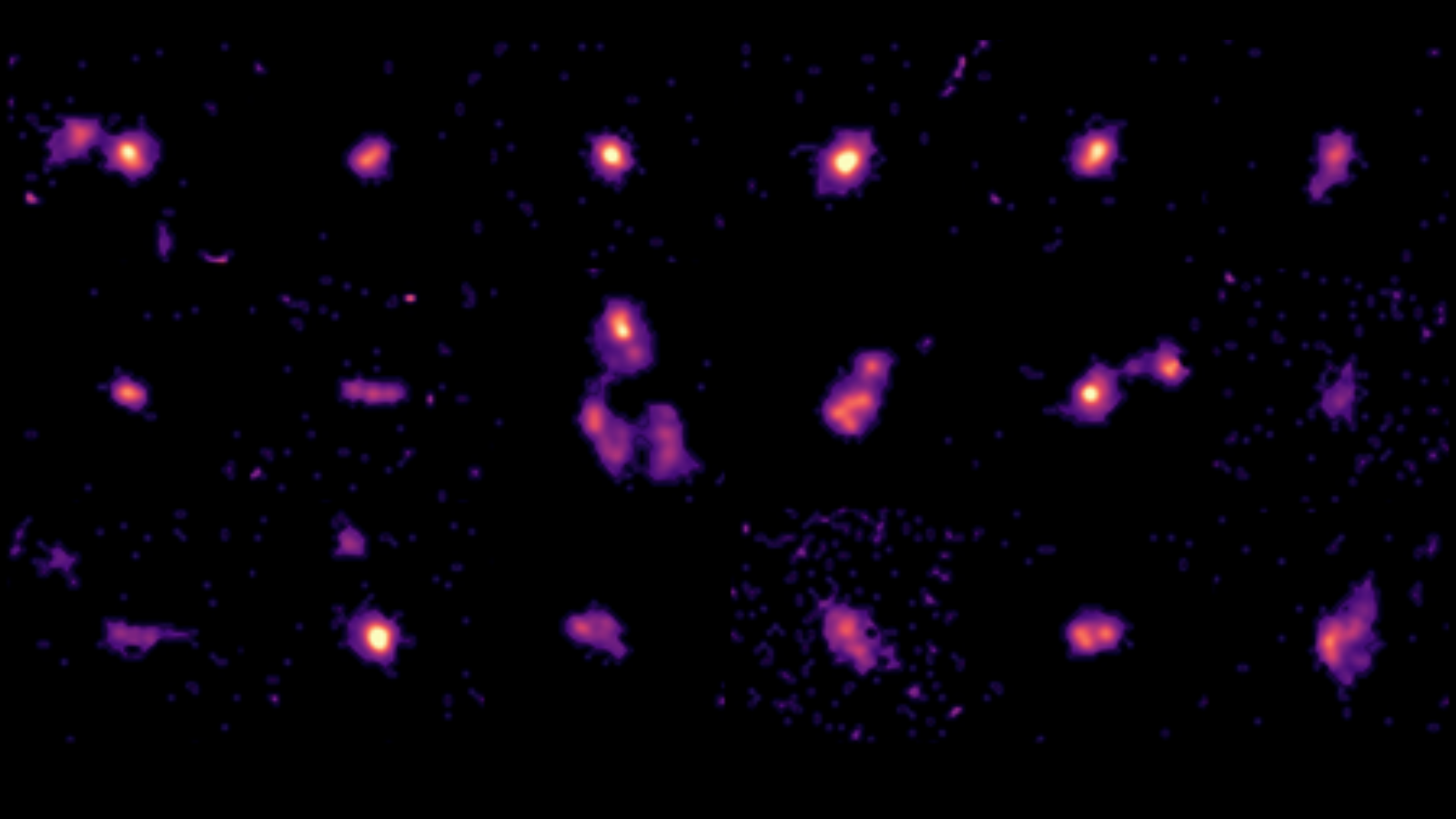Out There: Billions and Billions of Habitable Planets
There are about ten thousand billion billion habitableplanets in the observable universe, and some of these Earth-like worlds couldbe found by a mission set to launch early next month, a leadingplanet-formation theorist now speculates.
Alan Boss, astrophysicist at the Carnegie Institution inWashington, D.C., and author of "The Crowded Universe" (Basic Books),published this month, came up with that rough number by estimating there isabout one habitableplanet around every sun-like star in the galaxy, of which there are about10 billion, and multiplying that by the numberof galaxies in the universe (about 100 billion).
Thisresult is inexact of course, so give or take a power of ten or so, Boss said,which is standard for these types of estimates in astronomy.
"Basedon what we already know, the universe is going to turn out to be chock full ofhabitable planets (i.e. Earth-like worlds), and therefore life is likely to bewidespread," said Boss, who discussed these estimates with a group ofreporters last weekend in Chicago at the annual meeting of the AmericanAssociation for the Advancement of Science.
Thepromise of 'super-Earths'
Todate, precisely zero of these other Earths have been found. Technology simplyhas not allowed their discovery, presuming they exist. But astronomers areclosing in. In the past nearly 15 years, more than300 planets have been found around stars beyond the sun.
Three classes of planets havebeen found, for the most part ? Jupiter-like gas giants, Neptune-like icyplanets and hot "super-Earths."Such super-Earths, such as one reported by the Carnegie Institution's PaulButler in 2004 around Gliese 436 and another reported the same year by BarbaraMcArthur of the University around 55 Cancri, have masses of about five to 10times that of Earth and exist around one-third of all nearby stars like oursun, Boss figures. This estimate is based on the results of ongoingplanet-search efforts using the gravitational tug of planets on stars to detectworlds, called the Doppler approach, he said.
Breaking space news, the latest updates on rocket launches, skywatching events and more!
Most of these super-Earths are too hot to support life,but Boss thinks there are warm super-Earths, with longer period orbits and moresuitable for life. Examples are two warm or cool super-Earths reported in 2007by Stephane Udry and his colleagues on the Geneva Observatory to be orbitingGliese 581.
And, some of the icy planets might turn out to be rockyplanets similar in composition to Earth, only more massive, Boss said.
"We already know from folks who have been findingplanets around other stars that most stars have planets," he said, addingthat "simply from a theoretical ground of understanding how stars form,it's almost inevitable that they should end up having disks around them whichshould end up forming planets. So we expect them to be there from the point ofview of theory as well."
Kepler will test it
Boss's claims will be tested by NASA's Kepler mission, a1-meter-diameter space telescope set to launch March 5 from Cape Canaveralaboard a Delta 2 rocket. Among other tasks, Kepler is designed to count thenumber of Earth-sized and larger planets in the habitable zone around starslike the sun. Results should come in the next three or four years.
Kepler will detect planets using the "transittechnique," which involves inferring the presence of a planet by detectingthe dimmingof star light caused by the passage of the orbiting planet in front of thestar.
In the search for Earth-like planets, Kepler will beracing against the French-led CoRoT (Convection, Rotation and PlanetaryTransits) mission, a 27-centimeter-diameter space telescope launched in 2006.CoRoT already has found the smallest planet (COROT-Exo-7b) ever detectedorbiting a sun-like star. Twice the size of Earth, the exoplanet's temperatureis so high that it could be covered with lava or water vapor, CoRoT scientistssaid.
"We'd be astonished if Kepler and CoRoT did not find planets, because theyare already finding them," Boss said. Kepler might find more planets thanCoRoT because its telescope has a larger diameter (therefore it is moresensitive) and it will survey a larger patch of sky, he said.
"The fact that we can find [roughly Earth-sizedplanets] already implies that we are just seeing just the tip of the iceberg.There might be many more Earths out there waiting for us to find," Bosssaid.
And some of these could be found relatively close toEarth, he said.
"There are something like a few dozen solar-typestars within 30 light years of the sun," Boss said. "I would think agood number of those, perhaps half of them, will have Earth-like planets. So Ithink there are very good chances that we'll find some Earth-like planetswithin 10, 20, 30 light years of the sun."
Once the frequency of habitable-Earth-like planets in ourneighborhood of the galaxy is known, scientists will be better able to designspace telescopes capable of imaging those worlds and detecting evidence of themolecules necessary for life, such as water and oxygen, and possibly even thosecreated by life, such as methane, Boss said.
What took you so long?
Physicist Enrico Fermi, who lived in the first half ofthe 20th century and is known for developing the first nuclearreactor, thought there was intelligent life beyond Earth, but famously wonderedwhy we haven't heard from it yet (this question is called Fermi's Paradox),Boss writes in his book.
"The answer to that question ranges from practicalto suicidal," Boss told reporters Saturday.
The suicidal version: "Maybe it means civilizationswhich are capable of sending us radio signals just don't last that long. ? Dowe really think our civilization is going to last 1 billion years?"
The practical version: "There is a low probabilityof success [as with the SETI effort], but if you find something you have animmensely important finding."
Traveling to even the closest star orbited by a planetwith habitable life could take us hundreds of thousands of years, he said.
Meanwhile, the impact of CoRoT and Kepler findingEarth-like planets around sun-like stars will be huge, Boss said.
"Once we find the first one we'll have made thepoint that they really are there," Boss said. "Just by finding thefirst one we'll able to immediately say, 'Well if we found one around a nearbystar, just by multiplying the volume of the stars searched versus the ones thathave not been searched, we can infer there must be billions and billions moreof them just within our own galaxy.' So finding the first one will haveenormous implications for how many there are in the entire galaxy as well as inthe entire universe."
- Gallery: Amazing Backyard Galaxies
- Our Galaxy Should Be Teeming with Civilizations: Where Are They?
- Top 10 Most Intriguing Exoplanets

Robin Lloyd was a senior editor at Space.com and Live Science from 2007 to 2009. She holds a B.A. degree in sociology from Smith College and a Ph.D. and M.A. degree in sociology from the University of California at Santa Barbara. She is currently a freelance science writer based in New York City and a contributing editor at Scientific American, as well as an adjunct professor at New York University's Science, Health and Environmental Reporting Program.
